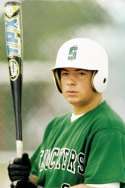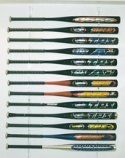Aqueous Cleaning Hits a Home Run
An aqueous cleaner allowed H&B to eliminate solvents from its shop...
Every year, from Little League to the Major Leagues, Louisville Slugger® baseball bats are used to hit thousands of home runs. But what does Hillerich & Bradsby Co. (H&B), Ontario, CA, the manufacturer of Louisville Slugger baseball bats, use to hit a home run? The answer: aqueous cleaning.
For years, H&B employed a vapor degreasing process to remove swedging oils used during the formation of its aluminum softball and baseball bats' tapered section. Originally the company used perchloroethylene, and then it switched to trichloroethylene. When trichloroethylene came under attack by environmental regulators in California, the company went back to perchloroethylene. "The solvents were a headache given the regulations, permits and everything else, but they were easy to use, and we had experience with them," stated Tom Benson, plant manager at H&B.
Featured Content
While the solvents were effective, the company realized future regulations would force a change to another cleaning process. "We wanted to get to something other than solvents because of all the regulations on the solvents within the state. We saw it coming several years ago and wanted to get into aqueous cleaning," said Mr. Benson.
About six years ago, H&B tried an aqueous cleaning process. "We tried several different soaps and cleaners and we weren't very successful at all," remarked Mr. Benson. H&B then hired a company to evaluate its system to determine changes that needed to be made to the cleaning process and the best soap to use on its aluminum bats. "We did that and made some changes and were still unsuccessful," stated Mr. Benson. The aqueous cleaners H&B tried provided inconsistent results and had a tendency to etch the aluminum bats. "Then we went into a venture with BetzDearborn and they married themselves to us," proclaimed Mr. Benson.
At the initial meeting between H&B and the aqueous cleaner supplier, customer needs were defined, plant systems were reviewed, goals were established and an action plan was developed. It was determined that the program needed to meet several requirements for cleaning the 7046, 7050 and 7055 aluminum alloy bats: compliance with California regulations to eliminate solvent degreasing processes by 1999; meet discharge requirements of the cities of Ontario and Chino; and achieve a reasonable bath life between solution dumps.
After evaluating H&B's cleaning operation, the aqueous cleaner supplier determined that a conversion to an aqueous cleaning process was feasible. H&B then provided the supplier with several soiled bats from various stages of the forming operation along with samples of the forming lubricants. The proposed cleaning program was tested with the soiled bats, and an oil loading study was performed to determine the cleaning ability of an aged bath and predict bath life.
Once the correct cleaning program was established, H&B began using BetzDearborn Kleen™ 155 alkaline cleaner and BetzDearborn™ DH-5801 cleaner additive, which are able to simultaneously remove the different lubricants used in the company's two manufacturing processes.
Racks of 50 or 100 bats are soaked in the cleaner and additive for 15 min. While in the bath, the bats are oscillated to ensure proper cleaning on the inside of the aluminum tubes. The bats are then drained and run through a series of three rinses. The first rinse is 90F, the second 135F and the third 160F. The temperature of the third rinse bath allows the bats to dry faster.
The new cleaner has allowed H&B to meet all of its goals. The company has eliminated all of its solvent degreasing processes to comply with California regulations. According to Mr. Benson, "We're now cleaning everything in the plant with aqueous cleaners. We even have a mini cleaning line where we clean the swedger roller casings because of all the oils on them." This has saved H&B thousands of dollars in solvent, permitting and pollution control costs.
H&B is also meeting all of the discharge requirements of Ontario and Chino. In fact, the company has gone one step further. "We are working with the governments right now to get all of the cleaning fluid out to them. They're going to tell us what we need to do. There's a possibility we can treat the bath and put it down the drain," said Mr. Benson.
H&B has been able to maintain a reasonable bath life as well. "Originally, we thought we might get one month out of the bath. After the startup, we were looking at a week to two weeks. Then, with BetzDearborn's help, we put in some feed pumps to add cleaner and keep the pH at an optimum level. Now our average bath life is three months," stated Mr. Benson. Another reason for the increased bath life is that the swedger operators are wiping off the excess forming oils from the outside of the bats. "That helps remove some of the oil. The main cleaning is then on the inside. That saves on the amount of oil in the tank, which has increased the bath life. Our cleaning costs are 25% less overall" remarked Mr. Benson.
This working partnership has helped H&B meet all environmental, health and safety regulations while maintaining a high-quality product. H&B feels that the continuous business planning, initiatives to reduce operating costs, engineering and analytical testing support, assistance with inventory management and control and chemical and equipment training will continue to keep this partnership swinging for the fences.
RELATED CONTENT
-
Cleaning Magnesium
Question: What is the recommended chemical cleaning process and composition prior to electroless nickel plating for magnesium?
-
Cleaning Prior to PVD/CVD Coating
Determining the cleanliness and chemical de-coating of PVD/CVD layers.
-
Powder Coat MDF for an Enviable Finished Product
Cabinet maker says powder coating on wood offers more benefits.


.JPG;width=70;height=70;mode=crop)



















